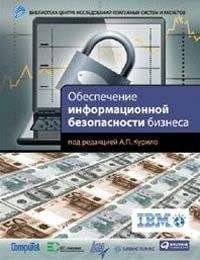8. Tarun Chorida, Richard Roll, and Avanidhar Subrahmanyam, “Evidence of the Speed of Convergence to Market Efficiency”. Working Paper, April 29, 2002. См. также: Eugene F. Fama, Lawrence Fisher, Michael C. Jensen, and Richard Roll, “The Adjustment of Stock Prices to New Information”, International Economic Review 10, no. 1 (February 1969): 1–21.
9. Stefano Della Vigna and Joshua Pollet, “Attention, Demographics, and the Stock Market”, Working Paper, November 23, 2003, http://fisher.osu.edu/fin/dice/seminars/pollet.pdf.
10. См. главу 1.
11. http://www2.cio.com/techpoll/index.cfm.
12. Amos Tversky and Daniel Kahneman, “Extensional Versus Intuitive Reasoning: The Conjunction Fallacy in Probability Judgment”, in Heuristics and Biases: The Psychology of Intuitive Judgment, ed. Thomas Gilovich, Dale Griffin, and Daniel Kahneman (Cambridge: Cambridge University Press, 2002), 19–48.
13. Sandford J. Grossman and Joseph E. Stiglitz, “On the Impossibility of Informationally Efficient Markets”, American Economic Review 70 (1980): 393–408.
Часть III. Инновации и конкурентная стратегия
Глава 18. Дело братьев Райт
1. Эту же мысль высказывают последователи теории эволюционной экономики Ричард Нельсон и Сидней Уинтерс. Они пишут: «Инновации в экономической системе – и фактически создание чего угодно нового в искусстве, науке или практической жизни – в существенной степени состоят из рекомбинации концептуального и физического материала, который существовал и ранее. Значительный импульс в научном, технологическом и экономическом прогрессе в современном мире проистекает из того факта, что каждое новое достижение не просто является ответом на конкретную проблему, но и пополняет собой огромное хранилище “компонентов”, которые доступны для дальнейшего использования в новых комбинациях для решения иных проблем в будущем» (Richard R. Nelson and Sidney G. Winter, An Evolutionary Theory of Economic Change (Cambridge, Mass.: Harvard University Press/Belknap Press, 1982), 130[19]).
2. На основе высказываний Ромера на заседании круглого стола 17 июня 1998 г. в Пеббл-Бич, Калифорния, опубликованных модератором Дональдом Лессандом в статье “The Soft Revolution: Achieving Growth By Managing Intangibles”, The Journal of Applied Corporate Finance 11, no. 2 (Summer 1998): 8–27.
3. Цитируется в Stephen R. Waite, Quantum Investing (New York: Texere, 2002), 1–3.
4. Эволюция техники в спорте наглядно показывает всю силу неконкурентных благ. Примеры включают плавание кролем (этот стиль получил широкое распространение только за последние 200 лет), исполнение штрафных бросков сверху с выносом руки в баскетболе и фосбери-флоп в прыжках в высоту.
5. Закон Мура – эмпирическое наблюдение, которое гласит, что при настоящих темпах развития технологий сложность электронных микросхем, с учетом минимальной стоимости компонентов, будет удваиваться каждые 24 месяца (http://en.wikipedia.org/wiki/Moore’s_Law).
6. Juan Enriquez, As the Future Catches You (New York: Crown Business, 2000), 62–65.
7. См.: http://nickciske.com/tools/binary.php.
Глава 19. Избавляйтесь от лишнего ради эффективности
1. Steven Pinker, The Language Instinct: How the Mind Creates Language (New York: HarperCollins, 1994), 150–51[20].
2. Alison Gopnik, Andrew Meltzoff, and Patricia Kuhl, The Scientist in the Crib: What Early Learning Tells Us About the Mind (New York: First Perennial, 2001), 186–87.
3. Joseph LeDoux, Synaptic Self: How Our Brains Become Who We Are (New York: Viking, 2002), 79–81.
4. Robert Aunget, The Electric Meme: A New Theory of How We Think (New York: Free Press, 2002), 185.
5. Barbara Clancy and Barbara Finlay, “Neural Correlates of Early Language Learning”, in Language Development: The Essential Readings, ed. Michael Tomasello and Elizabeth Bates (Oxford: Blackwell, 2001); предыдущая редакция этой главы доступна на сайте http://crl.ucsd.edu/courses/commdis/pdf/
6. neuralcorrelateschapter-nofigures.pdf.
7. Michael J. Mauboussin and Alexander Schay, “Fill and Kill: Succeeding with Survivors Is Nothing New”, Credit Suisse First Boston Equity Research, April 5, 2001.
8. См.: http://www.webmergers.com.
9. David M. Roup, Extinction: Bad Genes or Bad Luck? (New York: W. W. Norton, 1991), 32–33.
10. William D. Bygrave, Julian E. Lange, J. R. Roedel, and Gary Wu, “Capital Market Excesses and Competitive Strength: The Case of the Hard Drive Industry, 1984–200”, Journal of Applied Corporate Finance 13. No. 3 (Fall 2000), 8–19.
Глава 20. Опережая события
1. Часто новый вожак первым делом убивает всех детенышей в стае, чтобы получить возможность произвести новое потомство и передать ему свои гены.
2. Richard Foster and Sarah Kaplan, Creative Destruction: Why Companies That Were Built to Last Underperform the Markets – and How to Successfully Transform Them (New York: Doubleday, 2001), 47.
3. Alfred Rappaport and Michael J. Mauboussin, Expectations Investing: Reading Stock Prices for Better Returns (Boston, Mass.: Harvard Business School Press, 2001).
4. Foster and Kaplan, Creative Destruction; Everett Rodgers, The Diffusion of Innovation (New York: Free Press, 1995); and Geoffrey A. Moore, Paul Johnson, and Tom Kippola, The Gorilla Game: Picking Winners in High Technology (New York: HarperBusiness, 1999).
5. Michael J. Mauboussin and Alexander Schay, “Innovation and Markets: How Innovation Affects the Investing Process”, Credit Suisse First Boston Equity Research, December 12, 2000.
6. Gregory Zuckerman, “Stars of the ‘90s Aren’t Likely to Lead the Next Rally”, Wall Street Journal, December 17, 2001.
7. John Y. Campbell, Martin Lettau, Burton Malkiel, and Yexiao Xu, “Have Individual Stocks Become More Volatile? An Empirical Explanation of Idiosyncratic Risk”, Journal of Finance 54 (February 2001): 1–43.
8. Corporate Strategy Board, “Stall Points: Barriers to Growth for the Large Corporate Enterprise”, Corporate Strategy Board (March 1998).
9. Alfred Rappaport and Michael J. Mauboussin, “Exploiting Expectations”, Fortune, January 21, 2002, 113–15.
Глава 21. А в вашем портфеле есть дрозофилы?
1. Для читателей, которые не жалуются на недостаток свободного времени: http://www.ceolas.org/fly?intro.html.
2. Charles H. Fine, Clockspeed: Winning Industry Control in the Age of Temporary Advantage (Reading, Mass.: Perseus Books, 1998).
3. Glenn Rifkin, “GM’s Internet Overhaul”, Technology Review (October 2002): 62–67.
4. Eugene F. Fama and Kenneth R. French, “Disappearing Dividends: Changing Firm Characteristics Or Lower Propensity to Pay?” CRSP Working Paper 509, June 2000; см.: http://papers.ssrn.com/sol3/papers.cfm?abstract_id=203092.
5. Robert R. Wiggins and Timothy W. Ruefli, “Sustained Competitive Advantage: Temporal Dynamics and the Incidence and Persistence of Superior Economic Performance”, Organizational Science 13, no. 1 (January-February 2002): 82–105.
6. Robert R. Wiggins and Timothy W. Ruefli, “Hypercompetitive Performance: Are The Best of Times Getting Shorter?”; Статья представлена на ежегодном собрании Академии менеджмента, отделение политики и стратегии бизнеса, 31 марта 2001 г.
7. Хотя я считаю эту гипотезу предположительно верной, но не уверен в том, что она подтверждается данными. Дело в том, что последние годы, охваченные настоящим исследованием, характеризовались исторически высокими уровнями списания активов и затрат на реструктуризацию, что, скорее всего, привело к искажению бухгалтерских данных.
8. Richard Foster and Sarah Kaplan, Creative Destruction: Why Companies That Were Built to Last Underperform the Markets – and How to Successfully Transform Them (New York: Doubleday, 2001), 13; John Y. Campbell, Martin Lettau, Burton Malkiel, and Yexiao Xu, “Have Individual Stocks Become More Volatile? An Empirical Explanation of Idiosyncratic Risk”, Journal of Finance 54 (February 2001): 1–43.
9. J. Bradford DeLong and Lawrence M. Summers, “The ‘New Economy’: Background, Historical Perspective, Questions and Speculations”, Federal Reserve Bank of Kansas City Economic Review, Fourth Quarter 2001. См.: http://www.kc.frb.org/PUBLICAT/
10. ECONREV/Pdf/4q01delo.pdf.
11. Alfred Rappaport and Michael J. Mauboussin, Expectations Investing: Reading Stock Prices for Better Returns (Boston, Mass.: Harvard Business School Press, 2001), 26–27, 36–38.
Глава 22. Играйте по правилам
1. См. статью «Часто задаваемые вопросы о Deep Blue», http://www.research.ibm.com/deepblue/meet/html/d.3.3.html.
2. Katie Haffner, “In an Ancient Game, Computing’s Future”, New York Times, August 1, 2002.
3. Anna Muoio, “All the Right Moves”, Fast Company, May 1999; http://www.fastcompany.com/online/24/chess.html.
4. Эта идея перекликается с рекомендацией игрокам Пагги Пирсона. См.: Michael J. Mauboussin and Kristen Bartholdson, “Puggy Pearson’s Prescription”, The Consilient Observer 1, no. 11 (June 4, 2002).
5. Kathleen M. Eisenhardt and Donald N. Sull, “Strategy as Simple Rules”, Harvard Business Review (January 2001): 107–16.
Глава 23. Выживают наиболее приспособленные
1. Dan Goodgame, “The Game of Risk: How the Best Golfers in the World Got Even Better”, Time, August 14, 2000.
2. Stuart Kaufmann, At Home in the Universe (Oxford: Oxford University Press, 1996).
3. Steve Maguire, “Strategy is Design: A Fitness Landscape Framework”, Managing Complexity in Organizations: A View in Many Directions (Westport, Conn.: Quorum Books, 1999), 67–104.
4. Eric D. Beinhocker, “Robust Adaptive Strategies”, Sloan Management Review 40, no. 3 (Spring 1999): 95–106.
5. Daniel C. Dennett, Darwin’s Dangerous Idea: Evolution and the Meanings of Life (New York: Simon & Shuster, 1995).
6. Robert Loest, “Fitness Landscapes and Investment Strategies, Parts 1 and 2”, Portfolio Manager Commentary – IPS Funds (July and August 1998).
7. Clayton M. Christensen, The Innovator’s Dilemma: When New Technologies Cause Great Companies to Fail (Boston: Harvard Business School Press, 1997).
8. Michael J. Mauboussin and Alexander Schay, “Innovation and Markets: How Innovation Affects the Investing Process”, Credit Suisse First Boston Equity Research, December 12, 2000.
9. По-другому эти стратегии можно назвать стратегиями «использования» или «исследования». См.: Robert Axelrod and Michael D. Cohen, Harvesting Complexity (New York: Free Press, 1999), 43–58.
10. W. Brian Arthur, “Increasing Returns and the New World of Business”, Harvard Business Review (July-August 1996): 101–9.
11. Под руководством Джека Уэлча General Electric эффективно сочетала оптимизацию с риском. Например, Уэлч выделил руководителям крупнейших подразделений GE по нескольку сотен миллионов долларов, которые они могли расходовать по своему усмотрению «без вопросов». См.: Warren Bennis, “Will the Legacy Live On?”, Harvard Business Review (February 2002): 95–99.
12. Michael J. Mauboussin, “Get Real”, Credit Suisse First Boston Equity Research, June 23, 1999.
13. Shona L. Brown and Kathleen M. Eisenhardt, Competing on the Edge: Strategy as Structured Chaos (Boston: Harvard Business School Press, 1998).
Глава 24. Прострация от экстраполяции
1. См.: http://www.socialsecurity.gov/history/hfaq.html.
2. Richard Roll, “Rational Infinitively-Lived Asset Prices Must Be Non-Stationary”, Working Paper, November 1, 2000; Bradford Cornell, The Equity Risk Premium: The Long-Run Future of the Stock Market (New York: Wiley, 1999), 45–55; Eugene F. Fama and Kenneth R. French, “The Equity Premium”, Journal of Finance 57 (2002): 637–59; Jonathan Lewellen, “Predicting Returns with Financial Ratios”, MIT Sloan Working Paper 4374–02, February 2002.
3. Kenneth L. Fisher and Meir Statman, “Cognitive Biases in Market Forecasts: The Frailty of Forecasting”, The Journal of Portfolio Management 27, no. 1 (Fall 2000): 72–81.





